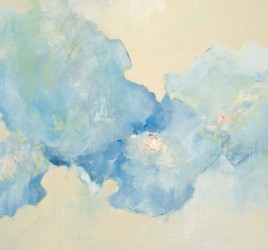The Psychology of Memory, As I Remember It.
I have always been interested in psychology and fascinated with how a lump of curly tissue in our skulls can essentially make up our entire emotional and cognitive being. We as humans are outwardly associating with the world and others around us while internally reviewing information we gather, remembering tasks to complete and repeating songs simultaneously. Evoking what psychologist Edward Thorndike termed “decay theory” I have been using myself as a subject in experiments with memory through my abstract art.
What is Decay Theory?
Put simply, decay theory proposes that memory fades with time. Easy enough. But there is more to it: when we obtain new information it is lightly placed upon our minds as a neurochemical ‘memory trace.’ If the new information is rehearsed than it becomes a more solid memory and therefore more available for retrieval, if it is not rehearsed then it fades and is eventually forgotten. Alphanumeric series 17-36A. There is one inconsistency among researchers. They disagree whether memories fade with time, decay theory, or because we are constantly absorbing new information that interrupts our process of remembering; ‘interference theory.’
Without looking, can you recall the alphanumeric series I snuck into the text?
That’s interference theory.
How Does This Relate to My Artwork?
I study the physiology of a flower, often over the course of a week and than I put away all the information. A couple days later, I attempt to capture a likeness of the botanical in my studio. Because I work with the intention of allowing decay and interference to effect the painting, no outcome is incorrect. It really becomes the marriage of neuro-science and botany (with artistic liberties)… but more on that another time.
See my abstract work at www.sarinavillareal.com/abstract/

